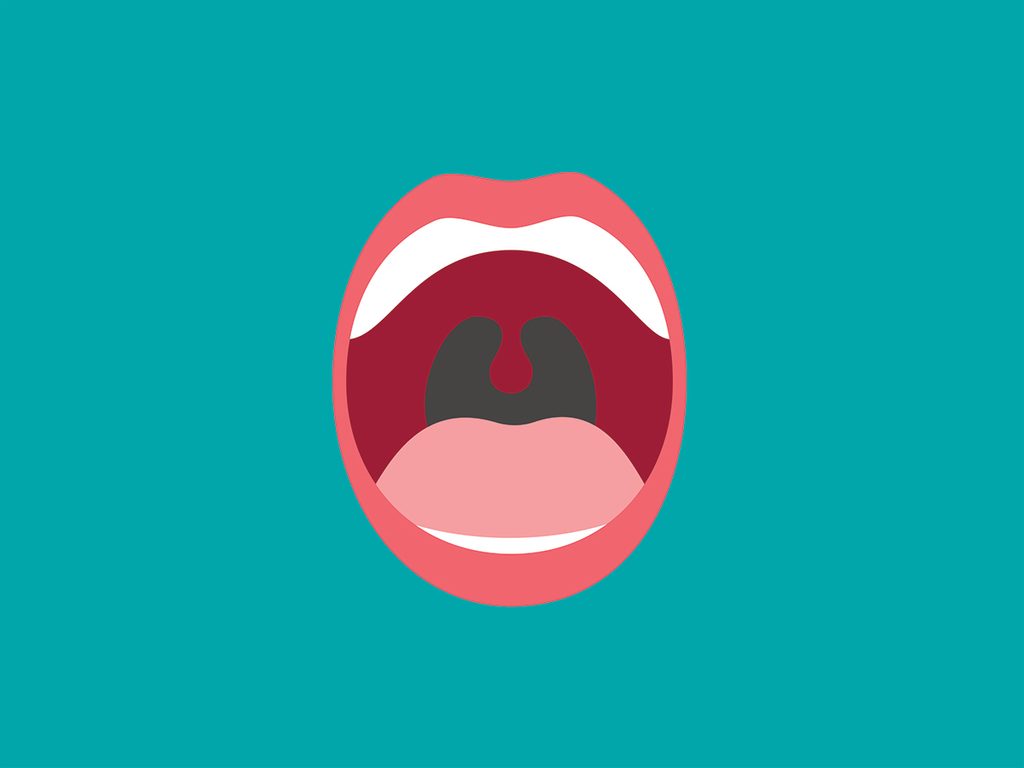Could You Have a Swallowing Disorder?

Swallowing disorders affect 10 percent of Canadians over 50. The good news is they are treatable. But first you have to identify them.
Catriona Steele sees a lot of people who suffer from swallowing disorders (also known as dysphagia). There’s even one in her own family. Though she claims to be fine, one family member coughs and chokes through each meal, struggling to swallow, she says.
Steele, a senior scientist at University Health Network and director of the Swallowing Rehabilitation Research Laboratory at the Toronto Rehabilitation Institute, is all too aware that, although dysphagia is common, many people either don’t realize they have the condition or are too embarrassed or afraid to treat it. “It’s something that people don’t really want to acknowledge,” she says.
Yet, the impact of the condition can be profound. “It limits the ability of people to participate in any social function that involves eating and drinking,” she says. It can cause choking and hospitalization for pneumonia. “Yet, it flies beneath the radar for patients and health care providers alike,” she says.
Who’s at Risk
Dysphagia affects one in 10 people over 50 in Canada, according to Speech-Language & Audiology Canada, and with an older population, that’s set to increase. It can be caused by a stroke (which can weaken the muscles involved in swallowing), cancer, radiation to treat head or neck cancer (which can damage the elasticity of the throat muscles), neurological conditions (such as Parkinson’s disease and multiple sclerosis) and head injuries.
Dysphagia can affect people of all ages, however, including babies who are premature and have an underdeveloped swallowing reflex and children with autism or cerebral palsy. If left undetected and untreated, it can lead to malnutrition and dehydration (patients avoid eating or drinking), choking and aspirational pneumonia (as people accidentally inhale foods or liquids into their lungs).
“Swallowing is such a complex function that involves 30 muscles, multiple nerves and the brain and brain stem,” explains Dr. Stacey Skoretz, a medical speech-language pathologist and director at the Swallowing Innovations Lab at the University of British Columbia.
Getting Diagnosed
It’s why she suggests getting a diagnosis as soon as possible. That means following up quickly if a person shows signs of a swallowing problem: frequent coughing or choking while eating, the need to drink many liquids with each mouthful, unexplained weight loss, frequent respiratory infections, drooling and frequent throat obstructions.
“If someone suspects they have the condition, they should have a general practitioner assess them for a swallowing assessment conducted by a speech-language pathologist, an occupational therapist or a dietitian,” says Dr. Patrice Lindsay, director of stroke at the Heart and Stroke Foundation of Canada. “Swallowing needs to be addressed because people can choke.” If a patient has had a stroke — and one-third to one-half of all stroke patients have dysphagia — identifying a swallowing issue should happen before any foods or liquids are consumed to prevent choking.
A swallowing expert can recommend further testing with a video fluoroscopic swallowing study, which is an X-ray of a person’s throat while they are swallowing to identify which muscles are affected. A flexible endoscopy can also shed light on the quality of a swallow.
(Related: I Spotted My Own Cancer in the Mirror—and It Saved My Life)
Solutions
If dysphagia is diagnosed and the specific impaired muscles in the throat are identified, there are a number of ways to manage it, says Dr. Rosemary Martino, a senior scientist at University Health Network’s Krembil Research Institute who runs large-scale studies that involve dysphagia in patients who have had head or neck cancer or stroke.
One approach is to work with a dietitian to develop a meal plan that involves eating pureed or thickened foods to slow down swallowing and allow more time for the throat muscles to react. Another option is to work with a speech-language pathologist to perform certain exercises that improve your ability to swallow through low intensity exercises. One of these exercises involves continuing to eat foods that are difficult to chew to build muscle strength. Another involves flexing certain facial muscles while eating and moving the chin from side to side while eating to exercise the throat. “The exercises are targeted to activate and engage the throat muscles,” says Dr. Martino.
Dr. Martino says that if a patient is struggling with the sensation of food after head and neck surgery or radiation, pain medications can be used to make the process less painful. “They’re more likely to challenge themselves with food,” she says of patients in this situation.
Dr. Skoretz is a proponent of ensuring that the mouth is clean in patients with dysphagia because bacteria in the mouth can cause pneumonia in the lungs if saliva and food are accidentally inhaled. “Increasing how often patients have their mouths cleaned can help prevent pneumonia,” she says.
Next: If You Eat This Food, You Could Reduce Your Risk of Colorectal Cancer by 17 Percent




